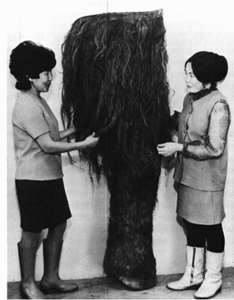Increasing populations demand increasing quantities of food, and though large game may not have been a large part of that food, paleontological evidence in many forms support the notion that it was nonetheless an important food source. Cave paintings are one source of evidence, but perhaps more important is the presence of human artifacts in association with mammoth bones in many fossil sites. In some cases, mammoth and mastodont bones have spearpoints imbeded in the animal's bones, the bones having healed around the stone artifacts, indicating encounters with paleohunters which the animals managed to survive.
